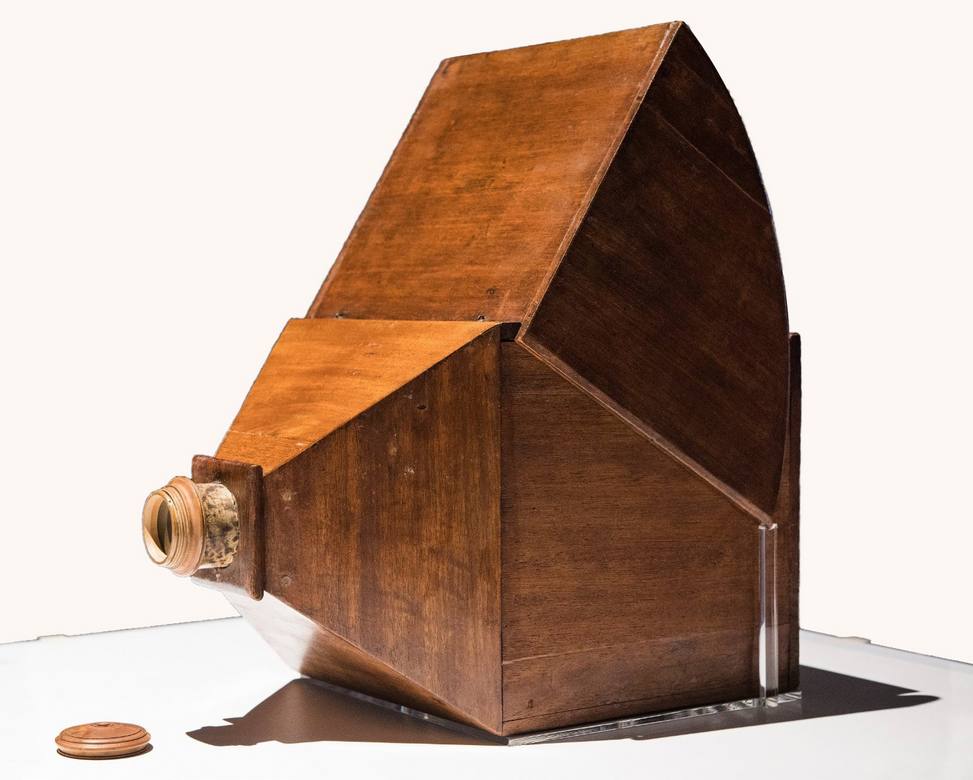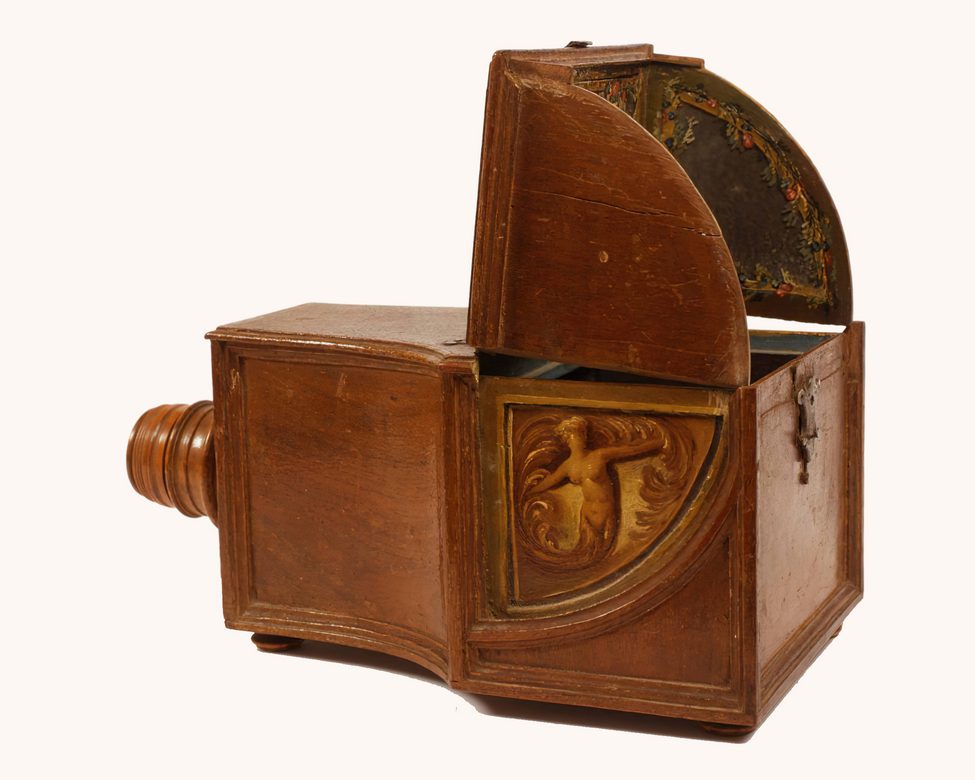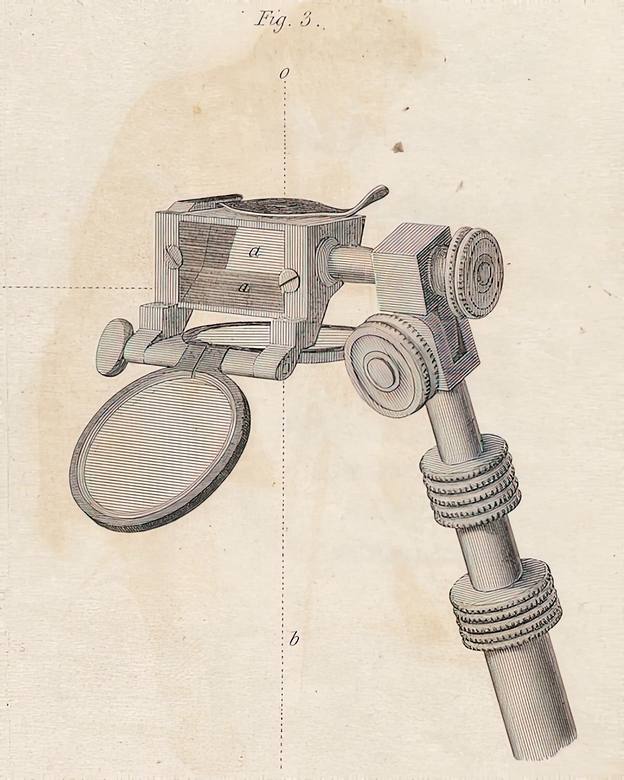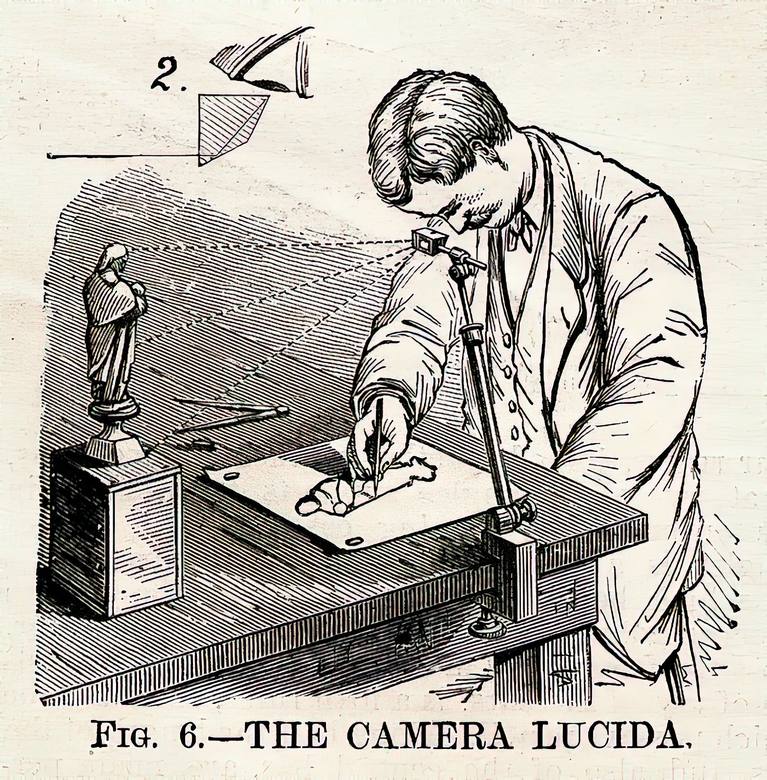
The Camera Obscura Evolution timeline towards Photography
The Camera Obscura becomes more known and popularized in the Art and scientific world. And in the Consumers one too.
1694 |
Robert Hooke (1635-1703) a natural philosopher and architect, creates a portable Camera Obscura which maintains intact the geometry of the drawn images. Here is shown a portrait he potentially made with it. |
1727 |
Johann Heinrich Schulze (1687-1744) discovers that silver nitrate darkened upon exposure to light. |
1750 on |
Camera Obscura is seen as the tool of the moment, to take around and draw with the utmost precise perspective what you see, even if you are not a real artist. Here are the schemes of how they work: Box type and Tent type. |
mid 18th |
Camera Obscura also becomes something to play with, adding fun to what could be considered its professional use. |
1755 on |
Canaletto (1697-1768) owns (and uses?) a Camera Obscura which very likely he received as a present during his stays in England. |
1764 |
Francesco Guardi (1712-93) is recognized as being a painter who used the Camera Obscura to recreate some Venetian atmospheres in at least two of his paintings. |
late |
Thomas Wedgwood (1771-1805) is the first documented scientist who tries to use the light to make an impression on paper and the first known to have attempted to photograph the image formed in a camera obscura. |
18th |
In several Encyclopedias the concept of the Pinhole Camera Obscura is explained, connecting it to Art and everyday enjoyment. Here are an image in Louis Figuier (1883), and an image from ca. 1754, which appeared in Ganot's Encyclopedia (1887). |
18th |
"... the process of drawing is reduced to the mere tracing ..." Adolphe Ganot in his Encyclopedia 'Natural philosophy for general readers and young persons' presents the Camera Obscura method as an help in drawing and to enjoy the drawing time. We are all artists now. |
1807 |
The Camera Lucida ('light room' in Latin) is patented by William Hyde Wollaston (1766-1828). The Camera Lucida is a much more compact drawing device than the camera obscura, as in it you just look through a lens and could see your drawing paper with a reflection of the subject (by the help of a mirror-glass or prism close to the eye) so you can compare your drawing to the subject.
And no right-left image flipping as in the Box type Camera Obscura. |
Copyright by Roberto Delpiano 2022-2025 - please visit my website www.delpiano.com
![[1694] - Robert Hooke - Camera Obscura](../images_db/x265__Robert_Hooke-Camera_Obscura_1694_asset-gp-3.jpg)


![[1877] - Transportable Camera Obscura Scheme - Wood engraving](../images_db/x264__Transportable_Camera_Obscura_Scheme_1877__get-120700998-gp2.jpg)

![Gianfrancesco Costa: [1750-56] - Veduta del Canale verso la Chiesa della Mira - Detail of Camera Obscura users - probably 1750-56](../images_db/Gianfrancesco-Costa-1762--x018b-camera-obscura-1750-56_01_det1.jpg)
![Paul Sandby: [ca. 1780] - Roslin Castle, Midlothian - Camera Obscura user detail](../images_db/Paul-Sandby-1780ca--x017a-Roslin-Castle--Midlothian-Google Art Project_det.jpg)


![Louis Figuier: [1883] - Image produced with the Camera Obscura](../images_db/Louis_Figuier_1883__x263_Image_produced_with_the_Camera_Obscura__get-935427134-gp2.jpg)
![[ca. 1754] - Two young french children discover the delights of the Camera Obscura when they see mama and papa walking in the gardens of their chateau](../images_db/x268__Two-young-french-children-discover-mary-evans-picture-library_ca._1754__printed_1887-gp.jpg)



